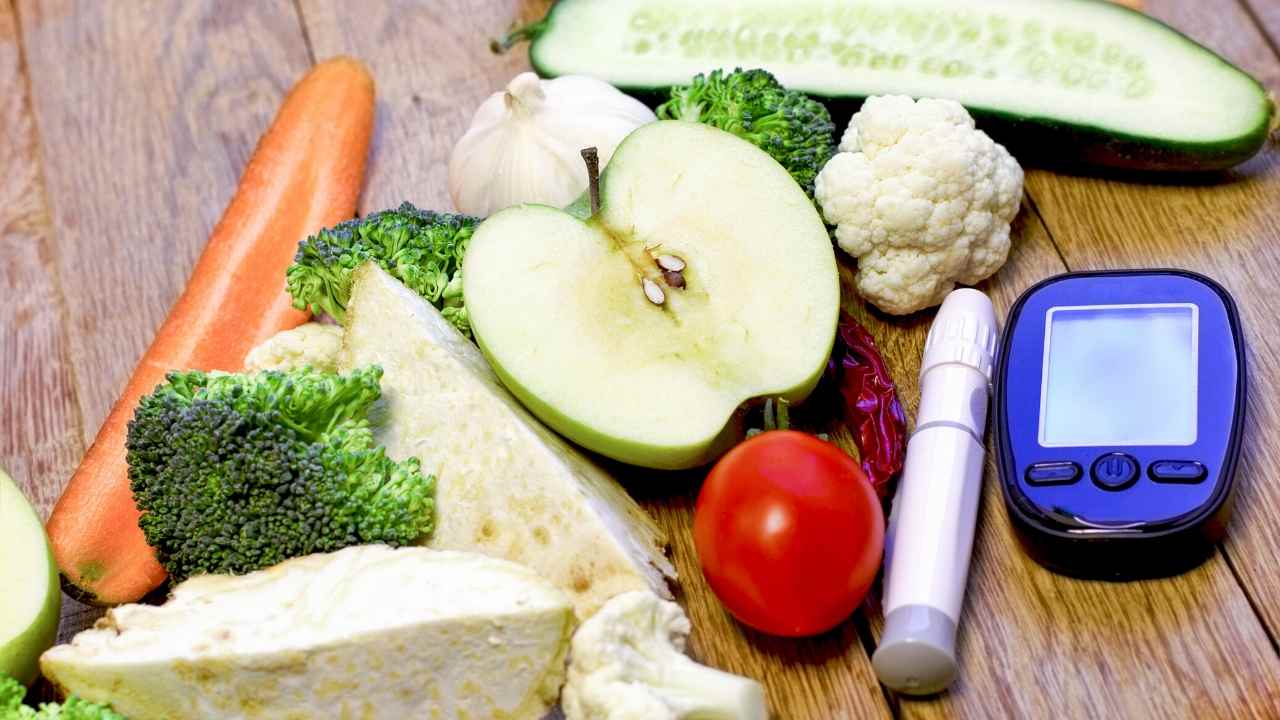
A satisfying dessert or snack can be made with fruit and vegetables. Natural sugars can also be found in fruits, which are high in vitamins and minerals. They also have fiber, antioxidants, essential vitamins, and other important nutrients. Consuming whole fruits is better than eating fruit juice which has been stripped off its nutrients. If you purchase canned fruit, look for ones that are canned in water or syrup. It is best to buy fresh fruit from your local grocery store.
Protein is an important component of a balanced diet. Protein should make up about 25% of your daily food intake. This is important for growth, maintenance, and healing of wounds. There are two options for protein: fish and animal meat. Organic, unprocessed meats are a good option if you're trying to reduce your consumption of meat. You can replace red meat with plant-based sources of protein if you're unable to eat them. It's a great way for you to eat better and have more satisfaction.

You can start eating healthier by considering the nutritional values of each food. A balanced diet includes all the essential nutrients in the correct amounts and proportions. A balanced diet contains both protein and carbohydrates. It also includes fat, minerals, vitamins and other nutrients. A balanced diet should include complex carbohydrate and fiber-rich foods like beans, brown rice, nuts and beans. Healthy fats and fiber are important components of a balanced diet.
A balanced diet is the ideal combination of nutrients and foods. It should contain a variety fruits and vegetables along with protein, grains and dairy. It should also include small amounts of fish or chicken, in addition to fruits and veggies. These foods are high levels of phytonutrients as well as antioxidants. They are crucial for your overall wellbeing and health. The correct proportions of these foods will help you maintain a stable metabolism.
Healthy eating a variety will ensure you have a balanced diet. Most fruits and vegetables are packed with fiber, and you should avoid processed meats. In addition to fruits and veggies, you should eat a wide range of whole grains, dairy products, and lean meats. A wide range of foods should be included in your daily diet to avoid dietary boredom. The more variety of ingredients, the greater.

A balanced diet should contain healthy fats, proteins, and carbohydrates. A healthy diet should have a variety fruits and vegetables to satisfy your cravings. You should limit your consumption of sugary and refined grains. A balanced diet should have the right balance of all these foods. A balanced diet should include plenty of whole grains like brown rice. You will need to eat more of the other type if you eat too many of one type.
FAQ
How do I find out what's best for me?
You must listen to your body. Your body will tell you how much exercise, nutrition, and sleep you need. It is important to listen to your body to ensure you are not doing too much. Listen to your body and make sure you're doing everything you can to stay healthy.
What is the difference in calorie and kilocalories?
Calories are units used to measure the amount of energy in food. Calories are a unit of measurement. One calorie contains the energy needed to raise the temperature of one gram of water by one degree Celsius.
Kilocalories are another way to describe calories. Kilocalories are measured in thousandths of a calorie. 1000 calories equals 1 kilocalorie.
What is the difference in fat and sugar?
Fat can be a source of energy that is obtained from food. Sugar is a sweet substance found naturally in fruits and vegetables. Both fats and sugars provide the same number of calories. Fats have twice the calories of sugars, however.
The body stores fats and they can lead to obesity. They may cause cholesterol buildup and lead to strokes or heart attacks.
Sugars are quickly absorbed into the body and provide instant fuel. This causes blood glucose to rise. High blood glucose levels can pose a danger because they increase the chance of developing type II Diabetes.
How often should I exercise
It is important to exercise for a healthy lifestyle. But, you don't need to spend a specific amount of time exercising. Finding something you enjoy is key. Stick with it.
If you work out three times a week, then aim to complete 20-30 minutes of moderate intensity physical activity. Moderate intensity will mean that you'll continue to be exerting yourself afterward. This type of exercise burns approximately 300 calories.
For those who prefer to walk, you can go for 10-minute walks four times a week. Walking is low-impact and easy on the joints.
Jogging three times a week for 15 mins is enough if you want to run. Running is a great way of burning calories and building muscle tone.
You can start slow if you're new to exercise. Start by doing 5 minutes of cardio each day, a few times per week. Gradually increase your cardio time until you reach the goal.
Which lifestyle is best for your health?
You can live a healthier lifestyle if you eat healthy food and exercise regularly. These guidelines will help you live a long, healthy life.
It's easy to start small with your exercise and diet. You can lose weight by walking 30 minutes each day if you are looking to lose weight. For more activity, you can try swimming or dancing. You could also sign up to an online fitness platform like Strava, which tracks your activity.
What is the problem?
BMI stands to Body Mass Index. It is a measurement of body weight based on height. BMI is calculated using the following formula:
Divide the weight in kilograms by the height in meters squared.
The result is expressed using a number from 0 through 25. A score of 18.5 or higher indicates overweight, while a score of 23 or higher indicates obesity.
A person who weighs 100 kg and has a height of 1.75 m will have a BMI of 22.
Statistics
- nutrients.[17]X Research sourceWhole grains to try include: 100% whole wheat pasta and bread, brown rice, whole grain oats, farro, millet, quinoa, and barley. (wikihow.com)
- This article received 11 testimonials and 86% of readers who voted found it helpful, earning it our reader-approved status. (wikihow.com)
- The Dietary Guidelines for Americans recommend keeping added sugar intake below 10% of your daily calorie intake, while the World Health Organization recommends slashing added sugars to 5% or less of your daily calories for optimal health (59Trusted (healthline.com)
- According to the 2020 Dietary Guidelines for Americans, a balanced diet high in fruits and vegetables, lean protein, low-fat dairy and whole grains is needed for optimal energy. (mayoclinichealthsystem.org)
External Links
How To
What does the term "vitamins" mean?
Vitamins are organic substances found naturally in food. Vitamins aid us in absorbing nutrients from the food we eat. Vitamins cannot be made by the body; they must be taken from food.
There are two types of vitamins: water soluble and fat soluble. Water soluble vitamins dissolve easily in water. Vitamin C,B1(thiamine), B2 (2riboflavin), and B3 (3niacin), as well as vitamin C,B1, B2 (riboflavin), and B3 (niacin), vitamin B6 (pyridoxine), vitamin folic acid (biotin), pantothenic, and choline are examples. Fat-soluble vitamins are stored in the liver, fatty tissue and kidneys. You can find vitamin D, E K, A, beta carotene, and other fat-soluble vitamins.
Vitamins are classified based on their biological activity. There are eight major groups of vitamins:
-
A - essential for normal growth and maintenance of health.
-
C - vital for proper nerve function, and energy production.
-
D - essential for healthy bones, teeth, and gums.
-
E is required for good vision and reproduction.
-
K - essential for healthy muscles, nerves, and bones.
-
P - Essential for strong bones and teeth.
-
Q - aids digestion, absorption and absorption iron
-
R – Required for the formation of red blood vessels.
The recommended daily allowance for vitamins (RDA) varies based on gender, age, and physical conditions. The U.S. Food and Drug Administration sets RDA values.
For adults over 19, the RDA for vitaminA is 400 micrograms per daily. However, pregnant women need 600 micrograms per day because it is important for fetal development. Children ages 1-8 require 900 micrograms per day. Infants below one year old require 700mg per day. But, between 9 months to 12 months, the amount drops to 500mg per day.
Children between the ages 1--18 years old who are overweight or obese require 800 micrograms per Day, while those who are overweight or obese need 1000 micrograms. To meet their nutritional needs, children underweight and obese require 1200 micrograms a day.
2200 mg of vitamin A per day is required for children aged 4-8 who have been diagnosed by anemia.
2000 micrograms daily is required for adults over 50 to maintain their general health. Women who are pregnant or breastfeeding need 3000 micrograms per day due to increased nutrient requirements.
Adults over 70 need 1500 micrograms daily, as they lose 10% of their muscle every ten years.
Women who are pregnant, nursing or breastfeeding need more than the RDA. Pregnant woman need 4000 micrograms daily in pregnancy, and 2500 per day after childbirth. Breastfeeding mothers need 5000 mg per day when breastmilk is being produced.